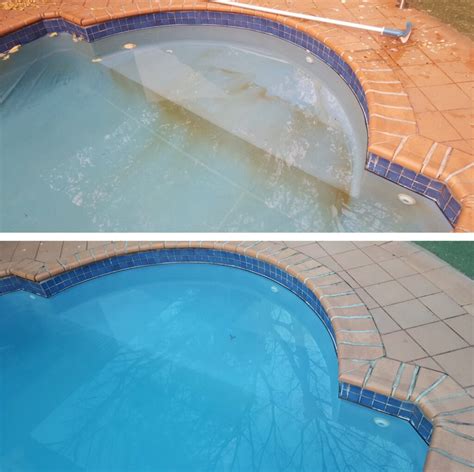Prevent Copper Staining: Keep Your Pool Sparkling
Copper staining in your swimming pool is an unsightly problem that can ruin the aesthetic appeal of your backyard oasis. That lovely turquoise water can quickly turn an unpleasant green or even a disturbing brown, depending on the severity of the staining. But don't despair! Understanding the causes and implementing effective preventative measures can keep your pool sparkling clean and inviting all season long.
This comprehensive guide will delve into the root causes of copper staining, explore effective prevention strategies, and offer practical solutions to maintain a pristine, copper-free swimming pool.
What Causes Copper Staining in Pools?
Copper ions, often introduced through algaecides or from corroding plumbing components (like copper pipes or fittings), are the main culprits behind those frustrating stains. These ions react with the pool's chemicals and surfaces, resulting in unsightly discoloration. The staining is often worse in pools with low pH levels or high alkalinity.
How does copper get into my pool?
- Algaecides: Many algaecides contain copper as an active ingredient. While effective at killing algae, overuse or improper application can lead to excess copper buildup.
- Plumbing Issues: Leaking or corroding copper pipes and fittings can release copper into the pool water.
- Improper Water Balance: An unbalanced pool (low pH, high alkalinity) increases the likelihood of copper staining.
- High Water Temperatures: Warmer water can accelerate the release of copper from various sources.
Preventing Copper Staining: A Proactive Approach
Preventing copper staining requires a multi-faceted approach, focusing on maintaining proper water chemistry and addressing potential sources of copper contamination.
1. Maintain Proper Water Chemistry
This is the cornerstone of copper stain prevention. Regular testing and balancing of your pool's pH and alkalinity are crucial.
- Ideal pH: Maintain a pH between 7.2 and 7.8.
- Alkalinity: Keep total alkalinity between 80 and 120 ppm.
Regular testing with a reliable test kit is vital. Don't rely solely on visual observation; subtle imbalances can lead to significant problems.
2. Choose Algaecides Wisely
If using copper-based algaecides, follow the manufacturer's instructions precisely. Overuse is a common cause of copper buildup. Consider exploring non-copper alternatives, such as those based on polyquaternium or other effective algaecides. Consult a pool professional for recommendations on algaecides that are best suited for your pool and its specific needs.
3. Inspect and Maintain Plumbing
Regularly inspect your pool's plumbing system for any signs of leaks or corrosion, particularly in copper pipes and fittings. Addressing these issues promptly prevents the release of copper into the pool water. Consider replacing older copper plumbing with more corrosion-resistant materials if necessary.
4. Regular Pool Cleaning
Thoroughly cleaning your pool regularly helps prevent the buildup of organic matter that can react with copper ions, exacerbating staining. This includes vacuuming, brushing the walls and floor, and skimming the surface.
5. Using a Sequestering Agent
A sequestering agent, such as EDTA, can bind to free copper ions in the water, preventing them from forming stains. This is a valuable tool in mitigating the risk of copper staining, particularly in pools with a history of copper issues. Always follow the manufacturer's instructions when using a sequestering agent.
Addressing Existing Copper Stains
If copper staining is already present, several methods can help remove it. However, prevention is always better than cure. For stubborn stains, consult a pool professional. They can assess the situation and recommend the most effective treatment strategy, which may include specialized chemicals or professional cleaning services.
Frequently Asked Questions
How do I know if I have copper staining?
Copper stains typically appear as a greenish-blue or brownish discoloration on the pool surfaces, particularly in areas with less water circulation. Sometimes, the water itself may take on a slight green or blue tint.
What are the long-term effects of copper in a pool?
While copper in moderate amounts isn't usually harmful to swimmers, excessive levels can cause irritation to skin and eyes. More importantly, it's the unsightly staining it causes that poses the biggest problem.
Can I use bleach to remove copper stains?
While chlorine (bleach) is a part of normal pool maintenance, it's not very effective at removing copper stains on its own. More specialized treatments are often required.
Is it expensive to prevent copper staining?
Preventing copper staining is primarily about proactive maintenance, which involves regular testing and balancing of pool chemicals. This is a relatively inexpensive practice compared to the cost of dealing with extensive copper staining and the need for specialized treatments or repairs.
By implementing these preventive strategies, you can significantly reduce the risk of copper staining and maintain a sparkling, healthy swimming pool for years to come. Remember, regular testing and diligent maintenance are key to a beautiful, copper-free pool.

